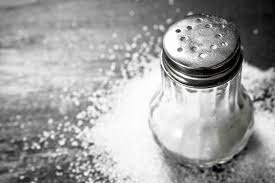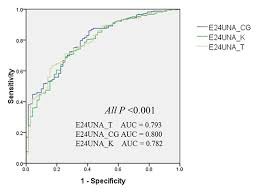Meal prep often seems like a chore, but it can completely transform your eating habits. Nearly 70 percent of people say planning ahead helps them make healthier choices and save money. The twist is, meal prepping isn’t just about cooking in bulk. It is about creating a flexible system that actually fits your life and keeps you excited about what you eat every week.
Table of Contents
- Step 1: Set Your Meal Planning Goals
- Step 2: Choose Your Recipes And Ingredients
- Step 3: Organize Your Kitchen And Tools
- Step 4: Prepare And Cook Your Meals
- Step 5: Portion And Store Your Meals
- Step 6: Review And Adjust For Next Week
Quick Summary
| Key Point | Explanation |
|---|---|
| 1. Set Clear Meal Prep Goals | Define personalized objectives like weight loss or stress reduction to guide your planning. |
| 2. Choose Recipes Wisely | Select recipes that meet your goals and align with your cooking skill level for better efficiency. |
| 3. Organize Your Kitchen Effectively | Maintain a tidy workspace with essential tools accessible to streamline meal preparation. |
| 4. Implement Batch Cooking Techniques | Cook multiple dishes at once to save time and increase meal variety throughout the week. |
| 5. Review and Adjust Weekly | Regularly assess what worked and what didn’t to refine your meal prep strategies continuously. |
Step 1: Set Your Meal Planning Goals
Successful meal prep starts with clear, personalized goals that transform your nutrition strategy from random cooking to intentional eating. Your initial step isn’t just about making food ahead of time it’s about designing a sustainable approach that aligns with your health, lifestyle, and personal objectives.
Begin by conducting an honest self assessment of your current eating habits, nutritional needs, and time constraints. Are you looking to lose weight, build muscle, save money, reduce daily stress, or simply eat more nutritiously? Your specific goal will determine everything from recipe selection to portion sizes and meal frequency.
Consider creating a detailed profile of your dietary requirements. This means understanding your macronutrient needs, calorie intake, and any specific dietary restrictions like vegetarian, gluten free, or low carb preferences. Learn more about personalized nutrition planning to help you craft a targeted strategy.
Time management is another critical component of setting meal prep goals. Evaluate how many hours you can realistically dedicate to cooking and preparation each week. Some people might have just two hours on a Sunday, while others could allocate more time. Your available time will directly influence your meal prep approach meal batching, partial prep, or full week preparations.
Key goal setting criteria include:
- Specific and measurable nutritional targets
- Realistic time commitment for preparation
- Alignment with personal health objectives
- Flexibility to accommodate lifestyle changes
Remember that meal prep goals are not permanent blueprints but evolving strategies. Be prepared to adjust your approach as you learn more about your body, preferences, and lifestyle rhythms. The most effective meal prep plan is one that feels sustainable and enjoyable rather than restrictive or overwhelming.
Step 2: Choose Your Recipes and Ingredients
Recipe selection is the heart of successful meal prep. This step transforms your nutrition goals into a concrete, delicious plan that keeps you motivated and satisfied. Strategic recipe choices determine not just taste but also your overall meal prep efficiency.
Start by curating recipes that align with your established goals and skill level. If you are a beginner, choose meals with minimal ingredients and straightforward cooking techniques. Look for recipes that share common ingredients to reduce waste and simplify shopping. Explore our comprehensive guide to cooking healthy meals for inspiration and technique recommendations.
Consider creating a diverse yet interconnected menu. Select recipes that can be easily modified or repurposed. For instance, roasted chicken can become a salad topping, sandwich filling, or base for a stir fry. This approach maximizes ingredient utility and prevents meal fatigue. Aim for a balance of proteins, complex carbohydrates, and vegetables in each recipe to ensure nutritional completeness.
Ingredient selection requires thoughtful planning. Prioritize fresh, seasonal produce and proteins that store well. Frozen vegetables, canned beans, and grains like quinoa are excellent meal prep staples that maintain nutritional value and extend shelf life. Purchase ingredients that can be prepped in advance and stored safely in portioned containers.
Key recipe and ingredient selection criteria include:
- Nutritional alignment with personal health goals
- Minimal ingredient overlap to reduce waste
- Cooking technique complexity matching skill level
- Potential for ingredient repurposing
- Storage and shelf life considerations
Remember that flexibility is crucial. Your first meal prep attempt might not be perfect, and that is completely normal. Each week you will refine your approach, discover new favorite recipes, and develop a personalized system that makes healthy eating enjoyable and sustainable.
Step 3: Organize Your Kitchen and Tools
Kitchen organization transforms meal prep from a chaotic experience to a streamlined, efficient process. The right setup can dramatically reduce preparation time and make cooking feel less like a chore and more like an enjoyable routine. Your kitchen layout and tool selection are critical components of successful meal prepping.
Start by conducting a comprehensive kitchen inventory. Remove duplicate utensils, discard damaged equipment, and create dedicated spaces for meal prep tools. Invest in high quality storage containers with tight sealing lids that can withstand refrigeration and microwave heating. Glass containers with compartments are particularly useful for portioning and storing multiple meal components separately. Check out our guide on smart cooking techniques for additional organizational insights.
Arrange your kitchen into functional zones that support efficient meal preparation. Create distinct areas for food storage, ingredient preparation, cooking, and cleanup. Position frequently used tools like cutting boards, knives, measuring cups, and mixing bowls within easy reach. Install hooks or magnetic strips for hanging utensils and consider clear, labeled containers for spices and dry ingredients to minimize searching time during cooking.
Prioritize tools that serve multiple purposes and save space. A food processor, quality chef’s knife, measuring cups, large cutting board, and stackable mixing bowls are foundational meal prep equipment. Consider investing in time saving appliances like an instant pot or air fryer that can prepare multiple servings quickly and consistently.
Key kitchen organization principles include:
- Maximize vertical storage space
- Use clear, labeled containers
- Keep frequently used tools accessible
- Invest in multipurpose kitchen equipment
- Maintain a clean and uncluttered workspace
Remember that kitchen organization is an ongoing process. Periodically reassess your setup, donate unused items, and adjust your system as your cooking skills and meal prep strategies evolve. A well organized kitchen is not about perfection but about creating a functional space that supports your health and culinary goals.
Here’s a quick reference table summarizing key kitchen tools essential for beginner meal prep, along with their most important uses.
| Tool/Equipment | Purpose/Use |
|---|---|
| Glass storage containers | Store meals safely, maintain freshness, suitable for fridge and microwave |
| Chef’s knife | Versatile cutting for meats, vegetables, and fruits |
| Cutting board | Provides a stable surface for food preparation |
| Measuring cups & spoons | Accurate ingredient portioning for recipes and meal prep |
| Mixing bowls | Mix ingredients and combine meal components efficiently |
| Food scale | Portion meals accurately to meet nutrition goals |
| Instant pot/air fryer | Save time with batch cooking and efficient meal production |
| Labels/markers | Mark containers with preparation dates and meal names |
Step 4: Prepare and Cook Your Meals
Meal preparation is where your carefully crafted plan transforms into delicious, nutritious food. This step requires strategic timing, smart multitasking, and a systematic approach to maximize efficiency. Your goal is to minimize cooking time while ensuring each meal maintains optimal flavor and nutritional value.
Begin by creating a preparation sequence that allows multiple dishes to be cooked simultaneously. Start with recipes requiring longer cooking times like grains, roasted vegetables, or slow cooker proteins. While these cook, focus on chopping ingredients for salads, preparing marinades, or assembling cold dishes. Explore our guide for meal prep strategies for busy people to streamline your cooking process.
Implement batch cooking techniques to reduce overall kitchen time. Prepare large quantities of versatile base ingredients like quinoa, brown rice, roasted chicken, or legumes that can be easily transformed into different meals throughout the week.
For instance, grilled chicken can become a salad topping, wrap filling, or stir fry protein. This approach not only saves time but also provides flexibility in your meal rotation.
Prioritize food safety during preparation. Use separate cutting boards for raw meats and vegetables, wash hands frequently, and ensure proteins are cooked to appropriate internal temperatures. Invest in a good meat thermometer to guarantee safe cooking. Cool prepared foods quickly and store them in airtight containers, dividing larger batches into individual portions for easy reheating and portion control.
Key meal preparation principles include:
- Cook multiple dishes simultaneously
- Prepare versatile base ingredients
- Use efficient cooking methods
- Prioritize food safety techniques
- Cool and store meals promptly
Remember that meal preparation is a skill that improves with practice. Each cooking session will reveal new techniques, shortcuts, and personal preferences. Be patient with yourself, embrace small improvements, and enjoy the process of creating nutritious, delicious meals that support your health goals.
Step 5: Portion and Store Your Meals
Portioning and storing your meals is the critical final step that transforms your cooking efforts into convenient, ready to eat nutrition. Proper storage ensures food safety, maintains meal quality, and helps you stick to your dietary goals. This step is about creating a systematic approach that makes grabbing a healthy meal as easy as opening the refrigerator.
Invest in high quality, clear storage containers with secure, leak proof lids. Glass containers with compartments are ideal because they allow you to separate different food components and are microwave safe for easy reheating. Learn more about budget friendly meal planning strategies to maximize your storage investments. Select containers in consistent sizes that stack neatly, maximizing refrigerator and freezer space while keeping meals organized.
Portion control is crucial for maintaining nutritional goals. Use a food scale or measuring cups to divide meals into consistent serving sizes that match your dietary requirements. Consider creating individual portions that can be quickly grabbed for work lunches or post workout meals. Label each container with the meal name and date of preparation to track freshness and prevent food waste. Aim to consume refrigerated meals within three to four days and frozen meals within one to three months for optimal taste and nutrition.
Implement a strategic storage system that considers meal longevity and nutritional preservation. Separate meals with high moisture content from crispy or crunchy ingredients to prevent sogginess. Store salad dressings and sauces separately, adding them just before eating to maintain texture. Use freezer friendly containers for meals you plan to store longer and consider blanching vegetables before freezing to preserve color, texture, and nutritional value.
Key portioning and storage principles include:
- Use clear, compartmentalized containers
- Label meals with preparation date
- Portion consistently
- Separate wet and dry ingredients
- Freeze meals strategically
Remember that meal storage is an evolving skill.

Step 6: Review and Adjust for Next Week
Weekly review and adjustment are the secret ingredients that transform meal prep from a one time activity into a sustainable lifestyle strategy. This final step is about learning from your experiences, identifying what worked, and making incremental improvements that keep your nutrition plan exciting and effective. Think of it as fine tuning your personal meal preparation engine.
Begin by conducting a comprehensive assessment of the past week’s meal prep journey. Evaluate each aspect of your preparation critically but compassionately. Explore our tips for smart meal planning strategies to help refine your approach. Examine which meals you genuinely enjoyed, which ones felt like a chore to eat, and identify any recipes that did not meet your nutritional or taste expectations. Consider factors beyond just flavor tracking things like preparation time, ingredient cost, leftover potential, and how well the meals supported your health goals.
Document your observations systematically. Keep a simple journal or digital note where you record insights about each recipe. Note specific details like which proteins were most satisfying, which vegetables remained crisp after storage, and which cooking methods produced the best results. Pay attention to your energy levels, hunger patterns, and overall feeling of satisfaction with the meals. This data becomes your personal roadmap for continuous improvement, allowing you to make informed adjustments in future meal prep sessions.
Remain flexible and open to experimentation. Your meal prep strategy is not a rigid blueprint but a dynamic system that evolves with your changing nutritional needs, schedule, and culinary preferences. Some weeks you might prioritize quick and easy meals, while other weeks you could explore more complex recipes. The goal is to create a sustainable approach that feels enjoyable rather than restrictive.
Key review and adjustment principles include:
- Document meal experiences honestly
- Track nutritional and personal satisfaction
- Remain adaptable to changing needs
- Celebrate small improvements
- Learn from less successful meal prep attempts
Remember that mastering meal prep is a journey of continuous learning. Each week presents an opportunity to refine your skills, discover new recipes, and develop a personalized system that makes healthy eating both convenient and delightful.
Take the Stress Out of Meal Prep With Personalized Support
Ready to turn meal prep from an overwhelming task into a simple, enjoyable habit? If you have ever struggled with finding the right recipes, managing time in the kitchen, or creating a nutrition plan that actually fits your life, you are not alone. Many beginners face the same pain points mentioned in this guide like setting clear meal planning goals, choosing the right ingredients, and staying consistent each week.
Imagine having tailored meal plans, instant recipe ideas, and a nutrition tracker designed just for you. With Dietium.com’s Recipians app, you can bridge the gap between intention and action. Enjoy expert guidance, custom recipes matched to your goals, and even real-time device integration for easy tracking. Take the next step by visiting Dietium.com Recipians and discover how effortless healthy meal prep can become. Start today to create a routine you love and see real results, faster.
Frequently Asked Questions
What are the key steps to start meal prepping?
To begin meal prepping, set clear goals related to your nutrition and lifestyle, choose recipes that align with those goals, organize your kitchen and tools, prepare and cook your meals, portion and store them properly, and review your process weekly to make adjustments.
How do I choose recipes for meal prep?
Select recipes that fit your nutrition goals and are suitable for your cooking skill level. Opt for meals with minimal ingredients, repurpose ingredients across different recipes, and ensure a balance of proteins, carbohydrates, and vegetables.
What containers are best for meal storage?
High-quality, clear storage containers with secure, leak-proof lids are ideal. Glass containers with compartments are particularly advantageous for portion control and reheating, while also being safe for both the refrigerator and microwave.
How can I maintain food safety while meal prepping?
To ensure food safety, use separate cutting boards for raw meats and vegetables, wash your hands frequently, cook proteins to the appropriate temperatures, cool prepared food quickly, and store them in airtight containers. Label meals with dates to track freshness.
Recommended
- Meal Planning Tips 2025: Smart Ways to Eat Healthy – Dietium
- Meal Prep for Busy People: Smart Tips and Simple Plans – Dietium
- Master Meal Planning on a Budget: Save Money & Eat Well – Dietium
- Beginner Vegan Meal Plan: Easy Steps for 2025 Success – Dietium
- Leckeres Frühstück gesund: Schnelle Rezepte für mehr Energie 2025
- How to Organize Pantry: Stylish Solutions for 2025 – BLUSHBEES USA





